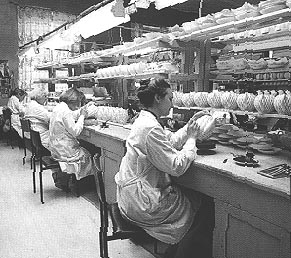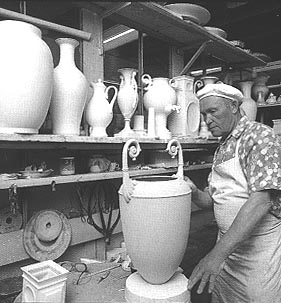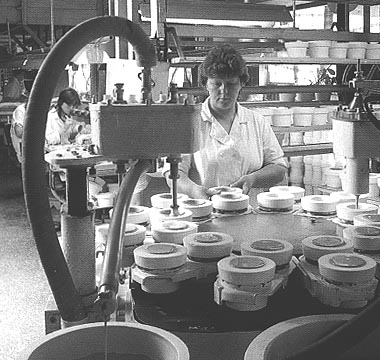The Lomonosov Porcelain Factory sits on the banks of the Neva river in St. Petersburg, Russia where it was founded in 1744. This was the first porcelain factory in Russia and one of the earliest in Europe. The opulent era of the late 18th and early 19th centuries provided a ready market for the factory's production of fine dacite porcelain figurines and dish ware. European nobility commissioned luxurious items for gifts and for their own estates and the factory grew with the demand for its products.
During its first 100 years the factory belonged to the ruling house of Romanov and many of the Romanovs took a direct interest in the business of the factory, working to improve production and create a demand for the products.
It was Peter the Great who was inspired to establish the first porcelain factory in Russia, however it was not that easy and Peter died before his dream was realized. It was his daughter Empress Elizabeth who oversaw the founding of the factory in St. Petersburg in 1744.
From the mid-19th century until the Revolution of 1917 the factory was known as the Imperial Porcelain Factory. After the October Revolution the factory was nationalised and renamed the State Porcelain Works. Finally, in 1925, it received its current name Lomonosov in honor of Mikhail Lomonosov, the founder of Russia's Academy of Science. Until the disintegration of the Soviet Union in 1991, the factory was commonly referred to as the Leningrad Lomonosov Porcelain Works.
In 1993, the factory was once again reorganized as a private joint-stock company and is now officially called the "Lomonosov Porcelain Factory."
In 1994 the factory celebrated its 250th anniversary. In 2004 the factory renovated the public part of the building including the museum of the factory's historical production.
Today, Lomonosov porcelain remains in high demand. The most popular pattern for Lomonosov dishware is called Cobalt Net.
This pattern has been exclusive to the Lomonosov Porcelain Factory for over 50 years. The pattern is skillfully hand painted using cobalt blue (made from mineral cobalt) and 22 karat gold. The pattern is a combination of intersecting lines of cobalt blue with inverted tear drops of cobalt blue and gold accents. Due to the genuine 22 karat gold accents it is recommended that Lomonosov porcelain be hand washed in warm water with mild detergent.

Handpainting tea pots in the Cobalt Net pattern.

Working in the factory's modeling shop.

The Lomonosov factory has the only workshop in Russia for producing bone china. This casting machine was designed by experts within the factory.
Photos taken from the book Lomonosov Porcelain Manufacture: St. Petersburg 1744-1994 by Galina Agarkova and Nataliya Petrova.
The Russian American Company imports Lomonosov porcelain direct from the factory in St. Petersburg. We sell only the first export quality porcelain and offer an extensive variety of items in the most popular patterns available.

